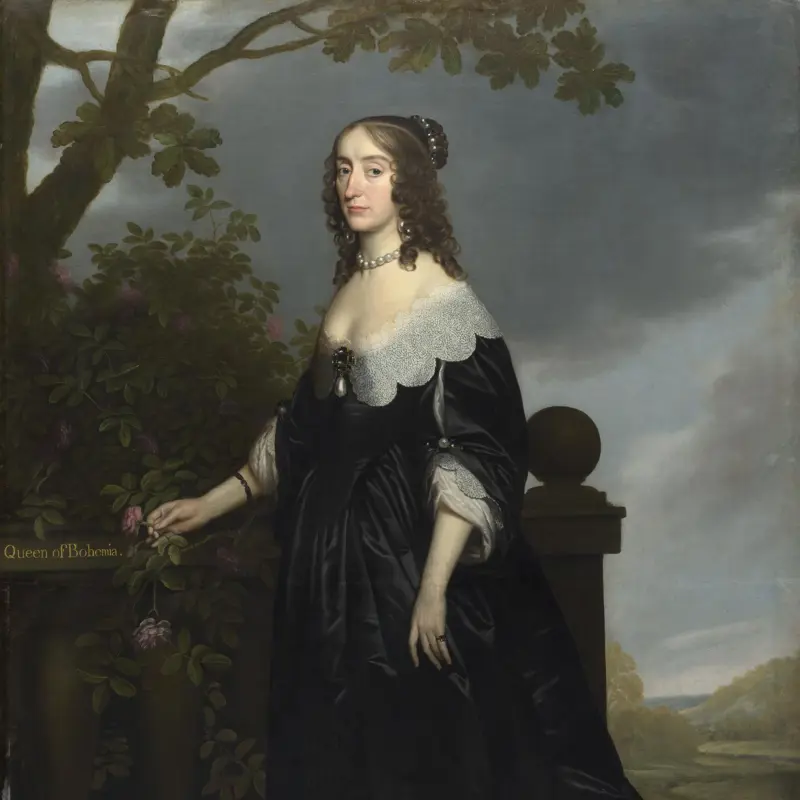Gerrit van Honthorst, 'Christ before the High Priest', about 1617
About the work
Overview
This large, atmospheric painting most likely depicts a moment from Christ’s trial before the Sanhedrin (a Jewish judicial body). The composition is symmetrically balanced around the lit candle on the central table: the shimmering flame illuminates the faces of Christ and the man sat facing him, probably the priest Caiaphas, but not much else. The picture hints at why, when he worked in Rome between 1610 and 1620, Honthorst’s nickname was Gherardo della Notte (Gherardo of the night).
Although it is shaped like an altarpiece, the picture was likely painted to be housed in the palace of Marchese Vincenzo Giustianiani, Gerrit van Honthorst’s important patron. Giustiniani owned another picture of the same subject painted after 1570 by the Genoese master Luca Cambiaso. Van Honthorst absorbed the styles of the Italian masters during his ten years in Rome, and painters such as Cambiaso and Caravaggio became a stylistic source, resulting in sparsely lit compositions devoid of unnecessary details.
Key facts
Details
- Full title
- Christ before the High Priest
- Artist
- Gerrit van Honthorst
- Artist dates
- 1592 - 1656
- Date made
- About 1617
- Medium and support
- Oil on canvas
- Dimensions
- 272 × 183 cm
- Acquisition credit
- Bought, 1922
- Inventory number
- NG3679
- Location
- Room 32
- Collection
- Main Collection
- Frame
- 20th-century Replica Frame
Provenance
Additional information
Text extracted from the ‘Provenance’ section of the catalogue entry in Neil MacLaren, revised and expanded by Christopher Brown, ‘National Gallery Catalogues: The Dutch School: 1600–1900’, London 1991; for further information, see the full catalogue entry.
Exhibition history
-
2015Gherardo delle NottiGallerie degli Uffizi8 February 2015 - 24 May 2015
-
2016Beyond CaravaggioThe National Gallery (London)12 October 2016 - 15 January 2017National Gallery of Ireland11 February 2017 - 14 May 2017Scottish National Gallery17 June 2017 - 24 September 2017
-
2018Utrecht, Caravaggio and EuropeCentraal Museum Utrecht14 December 2018 - 24 March 2019Bayerische Staatsgemäldesammlungen16 April 2019 - 21 July 2019
-
2022From the Medici to the Rothschilds. Patrons, collectors, philanthropistsGallerie d'Italia - Piazza Scala17 November 2022 - 26 March 2023
Bibliography
-
1960Maclaren, Neil, National Gallery Catalogues: The Dutch School, 2 vols, London 1960
-
1991Maclaren, Neil, revised by Christopher Brown, National Gallery Catalogues: The Dutch School, 1600-1900, 2nd edn (revised and expanded), 2 vols, London 1991
-
2001
C. Baker and T. Henry, The National Gallery: Complete Illustrated Catalogue, London 2001
About this record
If you know more about this work or have spotted an error, please contact us. Please note that exhibition histories are listed from 2009 onwards. Bibliographies may not be complete; more comprehensive information is available in the National Gallery Library.



